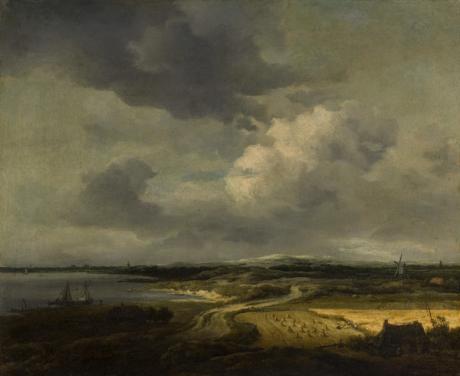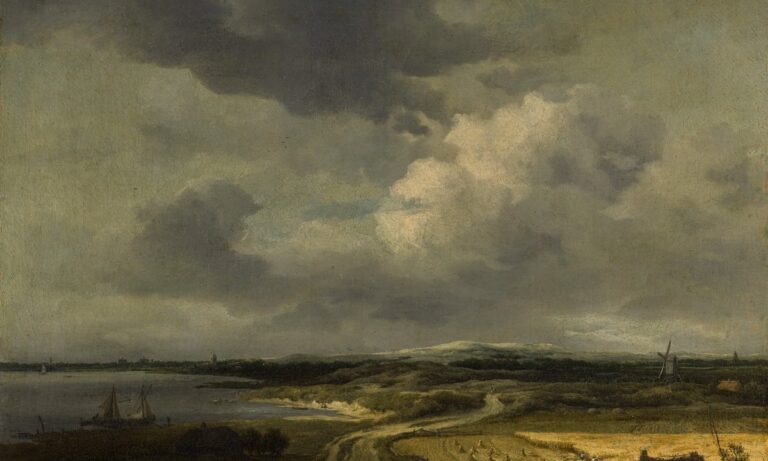
Arts Council England (ACE) has announced the latest round of objects saved for the UK under two tax relief schemes: the Acceptance In Lieu and the Cultural Gifts Scheme. This year (until 31 March 2023), works by Damien Hirst, Claude Monet and Barbara Hepworth are among 48 items worth more than £52m bought by museums and galleries across the country under both initiatives.
Acceptance In Lieu allows individuals who have a bill for inheritance tax or one of its earlier forms to pay the tax by transferring important cultural, scientific or historical objects and archives to the nation through allocation to museums, archives or public libraries.
Under the scheme, collectors Richard and Julia Anson allocated Head of Helen Gillespie by Frank Auerbach (1962-64) by Frank Auerbach to the National Portrait Gallery, London (the work has a tax value of £1.46 million). “The painting is deeply rooted in mid-century migration history,” says the accompanying report.
Two works by Hepworth were assigned: Fluvial shape (1965; tax value £2.6 million), a large-scale sculpture carved from American walnut, was given to the Ashmolean Museum in Oxford while Single form (1937-38; tax value £267,882), a rare surviving sculpture dating from the 1930s, was assigned to the Tate for the Barbara Hepworth Museum and Sculpture Garden, St Ives.
Norwich Castle Museum & Art Gallery received a key work by 17th century Dutch painter Jacob van Ruisdael, Panoramic landscape with corn fields and dunes by the sea. The report notes that the amount of tax that could be settled with their acceptance exceeded the actual tax liability to be paid by the bidders.
“The bid cleared £304,535 of tax and Norwich Castle Museum and Art Gallery, where it was permanently allocated in accordance with the condition attached to its bid, made up the difference of £298,508 with the help of grants from the National Heritage Memorial Fund .of £122,628 [and] the Art Fund of £119,400 [among others]”, says the report.
The Epte in Giverny by Monet (1884), accepted from the Mary Elliot-Blake collection, went to the Walker Art Gallery in Liverpool. The most valuable item, valued at £10.5 million, is a miniature of an ancient Greek marble statue of Apollo (The Apollo Belvedere by Pier Jacopo Alari-Bonacolsi, around 1520) to be housed in the Fitzwilliam Museum in Cambridge. The bronze was owned by Cecil Lewis, a property developer, and his wife, Hilda.
Meanwhile, the Cultural Gifts Scheme allows UK taxpayers to donate important works of art and other heritage objects to museums, galleries, libraries and public archives to benefit the nation. In return, donors receive a tax break based on a certain percentage of the value of the item they donate.
Two medicine cabinets known as Frank and Lorna Dunphy as Adam and Eve de Hirst, created in 2005 for Frank Dunphy, Hirst’s late commercial director, and his wife Lorna were sent to the National Galleries of Scotland. “In this sculptural portrait, Hirst used objects to represent the couple’s public and private interests. It contains the pills Frank took to manage his high blood pressure, for example, along with personal photos,” says the report, which states the cabinets have a tax value of £90,000.
Nicholas Serota, president of ACE, also writes that “this year, for the first time, the report features case studies that demonstrate the ways in which past acquisitions have improved museums and their public engagement activities. For Glynn Vivian Art Gallery [in Swansea]the pastel drawings of Josef Herman [including Dusk or Autumn, 1946, allocated in 2018] played an important role in their work with refugees and asylum seekers. At the Shipley Art Gallery, the studio’s ceramics contribute to its engagement with adults recovering from alcohol and drug addiction.
Last year London gallerist Thomas Dane and Simon Groom, Director of Modern and Contemporary Art at the National Galleries of Scotland, joined the Acceptance in Lieu panel.

